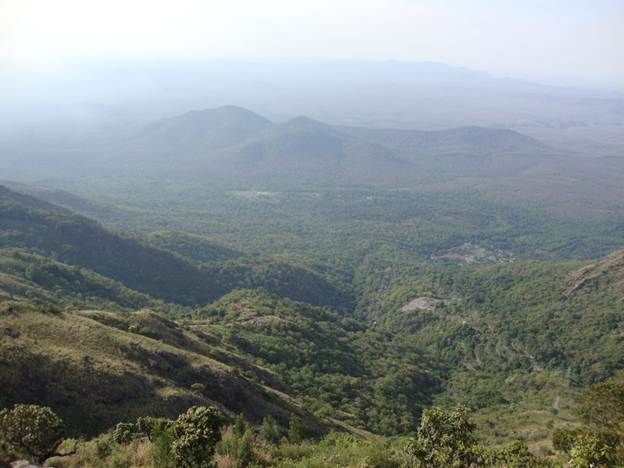In the lush Nilgiri hills near Ooty, 66-year-old Kurtaz Vasamalli, a member of the Toda tribe, is working tirelessly to preserve her community’s endangered language and oral traditions. “Our family god, Kuladheivam, has a temple in our village called poɬliwoʃ,” Vasamalli said, describing the sacred landscape revered by the pastoral Toda community, who have lived in the region for thousands of years. The Toda, numbering just a few thousand, consider the hills, famous for tea and coffee plantations, as sacred, with their gods and goddesses believed to be part of the landscape.
Vasamalli is collaborating with the Scheme for Protection and Preservation of Endangered Languages (SPPEL), implemented by the Mysuru-based Central Institute of Indian Languages (CIIL) under the Ministry of Education. The SPPEL initiative focuses on documenting and archiving India’s endangered languages—those spoken by fewer than 10,000 people or previously unstudied linguistically. The program conducts fieldwork, records grammar and vocabulary, produces documentaries, bilingual and trilingual dictionaries, pictorial glossaries, and ethno-linguistic profiles, and uploads these materials to online repositories for global access. So far, SPPEL has identified 117 endangered languages and aims to document around 500 lesser-known ones in the future.
The Toda language, a proto-South-Dravidian tongue that evolved in isolation, lacks a native script. Vasamalli recently worked with SPPEL to develop a Toda primer in Tamil script to promote literacy among children. “The elders are not teaching as they used to, and there is much more to the language. Written records are essential,” she said, expressing hope that Toda youth, increasingly interested in their culture, will help preserve it. The CIIL has also published eight digital dictionaries for endangered languages and uses advanced tools like high-end audio and video recording equipment, specialized software for linguistic analysis, and digital repositories to store data. The recently launched Sanchika website (https://sanchika.ciil.org) features hundreds of language samples and audio files, including those of Toda.
India’s linguistic diversity, with 1,369 recognized languages and 1,474 unclassified mother tongues recorded in the 2011 Census, faces significant challenges. A UNESCO report, in collaboration with the Indira Gandhi National Centre for Arts, underscores the urgent need to protect tribal and indigenous languages, warning that their loss erases irreplaceable cultural heritage and traditional knowledge. India’s endangered languages span five language families, including Indo-European, Dravidian, Austro-Asiatic, Tibeto-Burman, and Semito-Hamitic, and are spread across regions like the Northern, Northeast, East Central, West Central, Southern, and Andaman & Nicobar zones.
The Government of India is supporting these efforts through multiple initiatives. The Ministry of Tribal Affairs funds AI-based language preservation through the Tribal Research, Information, Education, Communication and Events (TRI-ECE) scheme. Projects include Rs. 58.70 lakh allocated to the Bhasha Research and Publication Centre in Vadodara for studying Adivasi languages and culture, and Rs. 3.122 crore to BITS Pilani, IITs, and Bhashini for developing AI translation tools for tribal languages. The Ministry of Culture promotes folk and tribal arts through research, digitization of manuscripts under the National Manuscripts Mission, and cultural mapping of 4.5 lakh villages under the National Mission for Cultural Mapping. The Janapada Sampada Division conducts extensive fieldwork to document vanishing traditions, while Rashtriya Sanskriti Mahotsavs showcase tribal arts to raise awareness.
The National Education Policy 2020 emphasizes multilingual education to preserve local languages, aligning with global efforts. UNESCO has declared 2022–2032 as the International Decade of Indigenous Languages to address the critical situation of nearly half of the world’s 7,000 languages, which are endangered. The International Day of the World’s Indigenous Peoples on August 9, themed “Indigenous Peoples and AI: Defending Rights, Shaping Futures,” highlighted AI’s potential and risks for indigenous communities. While Polynesian communities use AI for reef conservation and New Zealand’s Te Hiku Media employs it for Māori language revitalization, challenges remain, including the lack of indigenous representation in AI development and the use of indigenous knowledge without consent.
Vasamalli’s multilingual journey—she speaks Toda, Tamil, and English—reflects India’s broader linguistic landscape, where 89.59 crore people are monolingual, 22.90 crore are bilingual, and 8.60 crore are trilingual, according to the 2011 Census. However, dominant languages like Hindi, Bengali, and Marathi overshadow endangered ones, posing a challenge for tribal communities. The Ministry of Tribal Affairs addresses this through bilingual dictionaries and trilingual education modules, supporting the three-language formula to balance heritage preservation with access to opportunities.
“We believe in divine power. If we protect the land, trees, and nature, we receive blessings,” Vasamalli said, explaining the Toda belief in their god Kot̠ajen, who resides in a sacred mountain. Through SPPEL’s efforts—recording words, songs, and stories, analyzing grammar, documenting cultural practices, and creating digital archives—India is working to ensure that languages like Toda endure for future generations.










